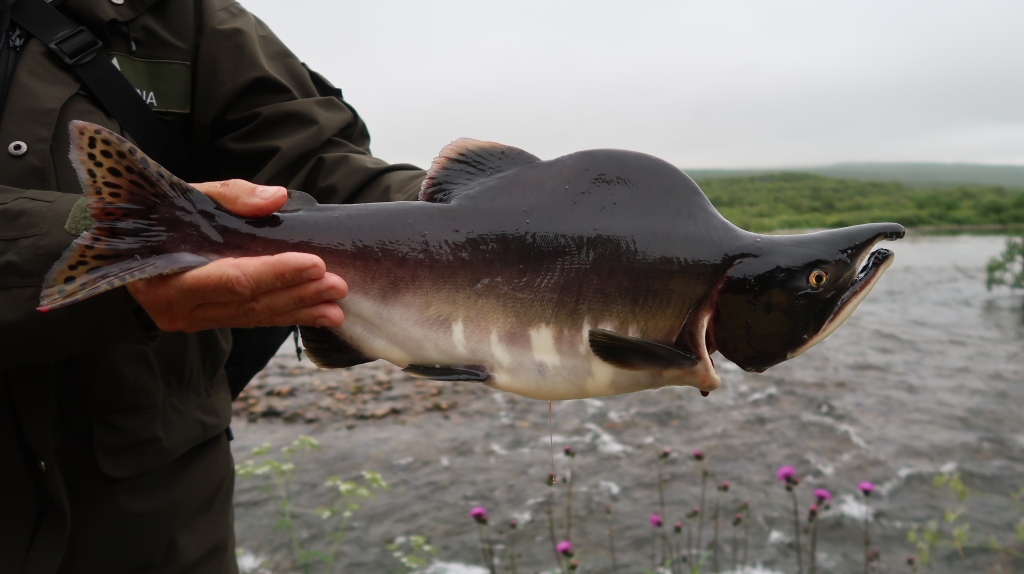
Approximately 18,300 pink salmon were caught in this river in 2023.
Photographer: Eva B. Thorstad
By Jessika D. Guay, Robert J. Lennox, Eva B. Thorstad, Knut W. Vollset, Stian Stensland, Jaakko Erkinaro, and Vivian M. Nguyen.
Pink salmon are a species of Pacific salmon that are considered invasive in Norway following an exceptional increase in pink salmon numbers in Norwegian rivers in 2017, 2019, 2021, and 2023. Pink salmon may compete for resources with Atlantic salmon and sea trout, both native to Norway, outnumbering them in recreational fishing catches. As a result, understanding what anglers who fish in Norway think of pink salmon is vital in assessing the social and economic impacts of the presence of pink salmon, especially if pink salmon deters anglers from fishing in Norway.
We surveyed local and tourist anglers who purchased a salmon fishing license in Norway in 2020 to assess their perceptions of pink salmon and whether they would modify their fishing practices due to the pink salmon invasion. Most anglers had negative perceptions of pink salmon, regardless of whether it was a low or high year for pink salmon. They expressed that they do not want the species to become established in Norway and that they would be dissatisfied with catching more than one pink salmon every time they go fishing. We also found that almost half of our survey participants would modify their fishing habits to target pink salmon specifically for the purpose of removing them from the rivers. Interestingly, there was unanimous agreement among our participants to volunteer in targeted pink salmon removal programs, demonstrating stewardship action among anglers to manage the pink salmon invasion.
Anglers also expressed disinterest in eating pink salmon, despite being of reasonable quality when they freshly enter rivers from the sea. There may be opportunities to promote the harvest of pink salmon in fjords and rivers when the meat quality could be considered very good by some consumers. We suggest educating anglers on how to make the most of the pink salmon that they can catch, given that the species is more likely than not to become a common catch for salmon anglers.
With the near-certain probability that pink salmon will continue to return every other year to Norwegian rivers in greater numbers, their presence may significantly impact fishing experiences. Fisheries managers should account for the widespread desire for management intervention against pink salmon, even though eradication is not likely no matter how intensive removal efforts become. Efforts to change narratives about pink salmon to encourage fishers to harvest pink salmon from fjords and rivers for consumption might be promising to promote a more sustainable use of the resource, with added benefits of relieving negative impacts of this species on native fish such as Atlantic salmon and sea trout.